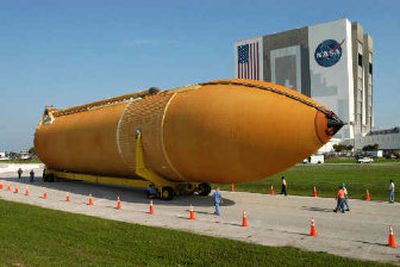NASA thinks ahead

HOUSTON – In less than six weeks, NASA plans to relaunch the space shuttle for the first time since Columbia disintegrated during re-entry in 2003.
As a precaution, NASA officials have drawn up a list of daring maneuvers they could use to help bring astronauts home on a damaged vehicle.
The most dramatic scenarios would require NASA to ignore long-standing flight rules, such as guidelines on when to start re-entry, as the situation demands.
The new procedures could be used if the shuttle’s heat shield suffered damage, as Columbia’s did. The steps are designed to reduce temperatures on the heat shield:
•In the most extreme case, NASA could raise the shuttle’s nose 10 degrees above normal as it hurtles toward the Earth. The maneuver has never been attempted.
•While the shuttle is in orbit, the damaged part could be pointed away from the sun and toward the chill of outer space to help it remain cooler.
•An astronaut could throw unneeded items, such as extra space suits, overboard or leave them on the International Space Station. Less weight means less heating.
Shuttle managers decided to develop such plans after the loss of Columbia. As the ship re-entered the atmosphere, hot gases penetrated the heat shield, which had been damaged by debris. The seven crew members died.
The options that NASA has devised could cut the temperatures the heat shield would have to withstand by several hundred degrees.
That’s probably enough to make a difference in some cases, says Leroy Cain, who led the planning.
Shuttle Discovery is scheduled to blast off as early as July 13. In preparation, NASA has tried to cut the risk that debris will gouge the heat shield.
“We are doing everything we can to eliminate critical debris,” Cain says. But “what if we’re not as smart as we think we are? We’d like to be able to have some response.”
The most radical plans are unlikely to be used, Cain says. NASA would resort to such steps only if “we literally don’t have any other choice,” he says.